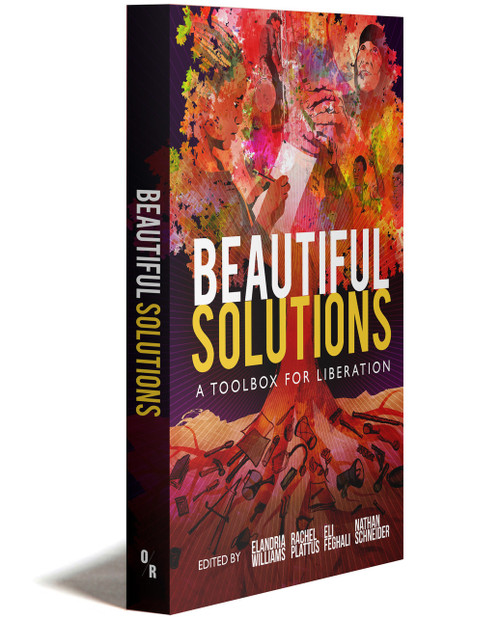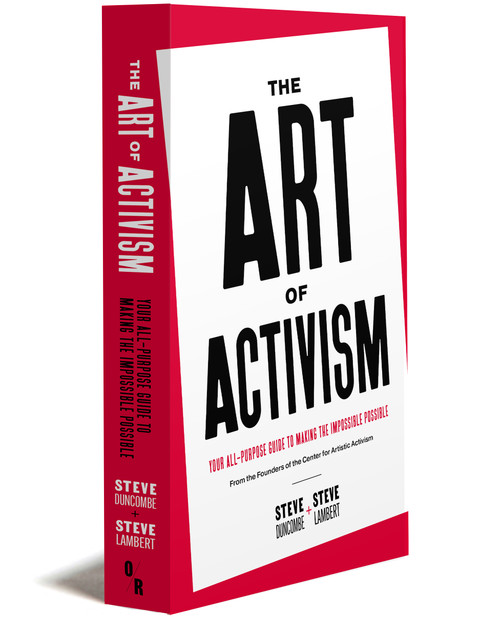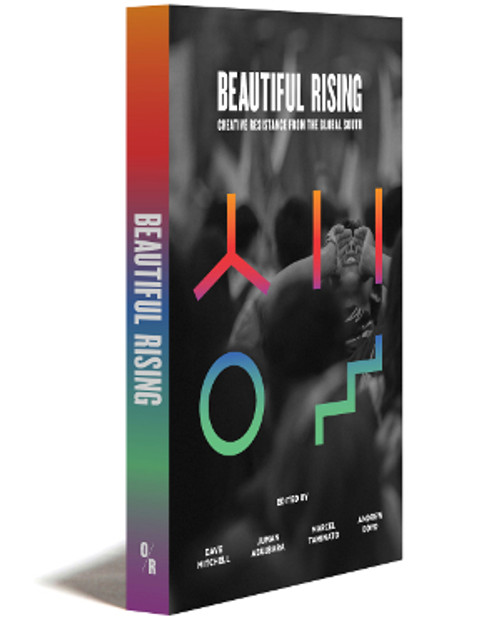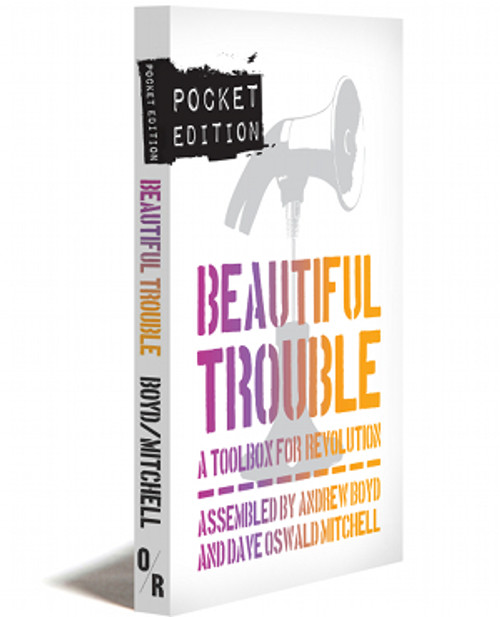Beautiful Solutions - Paperback (beautifultrouble.org)
“Capitalism can’t get us out of this crisis. If you’re wondering what can, take a look at Beautiful Solutions.”
—Naomi Klein“Shows us that we are not starting from scratch and we are not alone in imagining an economy that allows us to love each other!”
—Adrienne Maree Brown, author of Emergent Strategy: Shaping Change, Changing Worlds“A loving and thoughtful gathering of our stories…a celebration of our collective genius…takes on the revolutionary question of how we create worlds where we all thrive.”
—Makani Themba, author and Movement Strategistabout the bookabout
Our problems are global and interconnected, and our solutions must be too. With over seventy contributors, this toolbox spotlights the collective wisdom that reminds us that another world is not only possible, it’s already under construction. Everything we need to transform our communities already exists. From food sovereignty to debt abolition, from folk schools to energy democracy — and from Argentina to Zimbabwe. If you long for a more beautiful, more just, and more livable world — and want to know how to get there — this book is for you.
Created in partnership with:
Beautiful Trouble, New Economy Coalition, People’s Hub, Highlander Center
About The Author / Editor
Eli Feghali is director of Communications and Online Organizing for the New Economy Coalition. He has spent the majority of his professional life working as a communications specialist and community organizer. Eli is also Co-Chair of the Board of YES! Magazine. He lives in Cambridge, MA.
Rachel Plattus was director of programs at the New Economy Coalition from 2012-2015. She coordinated NEC's Youth and Student organizing and community reinvestment efforts, and worked to build community, organizational and funder engagement in the New Economy. Rachel lives in Cambridge, MA.
Nathan Schneider is a professor of media studies at the University of Colorado, Boulder. He has written for Harper’s, The Nation, The New York Times, The Catholic Worker, Vice, YES! and other publications. His most recent book is Everything for Everyone: The Radical Tradition that Is Shaping the Next Economy.
Elandria Williams was the Executive Director at PeoplesHub and a staff member of the Highlander Research and Education Center, where she was also on the Organizational Leadership Team. Elandria coordinated the Southern Grassroots Economies Project and supported community leaders and organizers in the South and Appalachia.
Preview
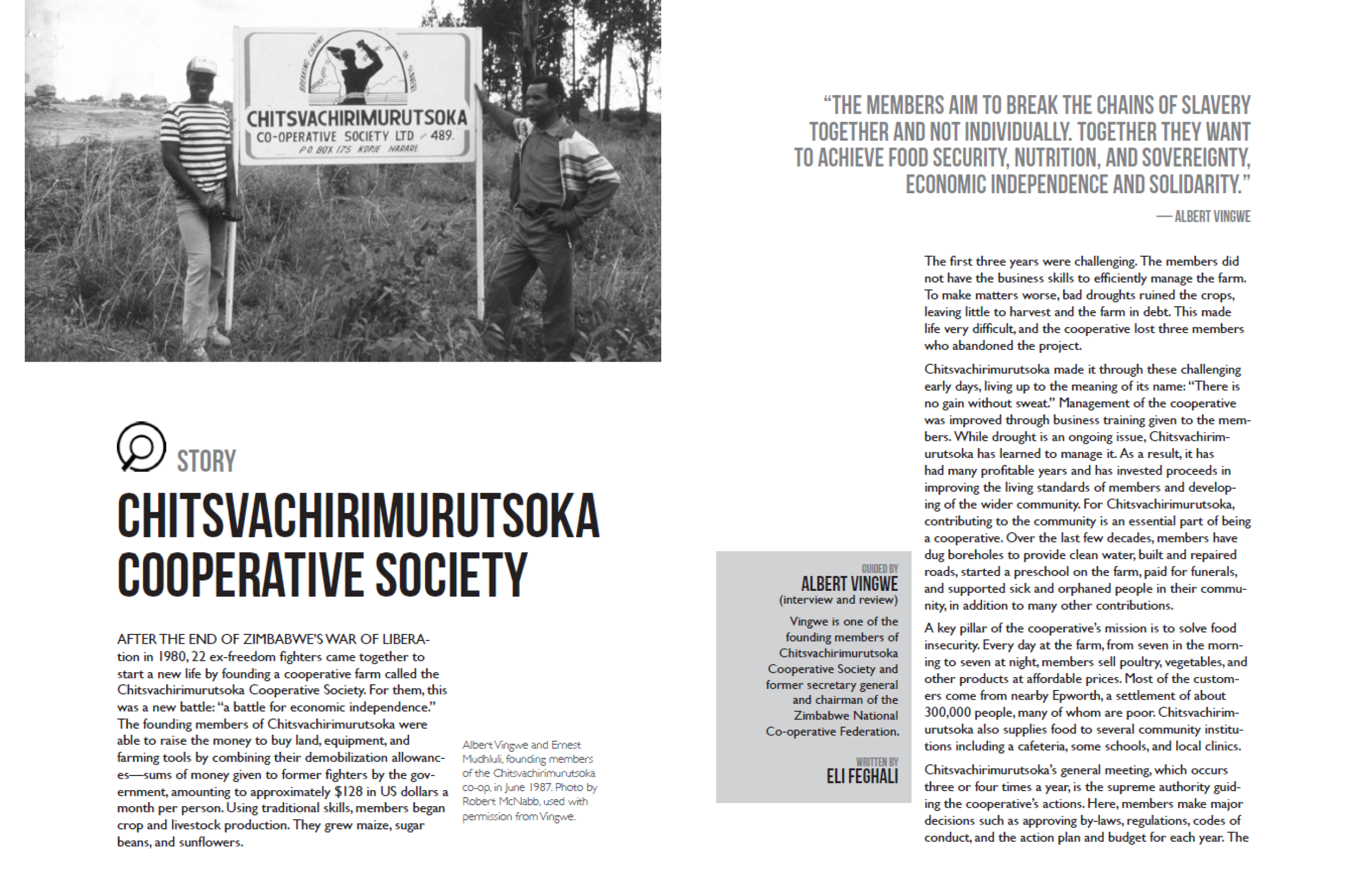
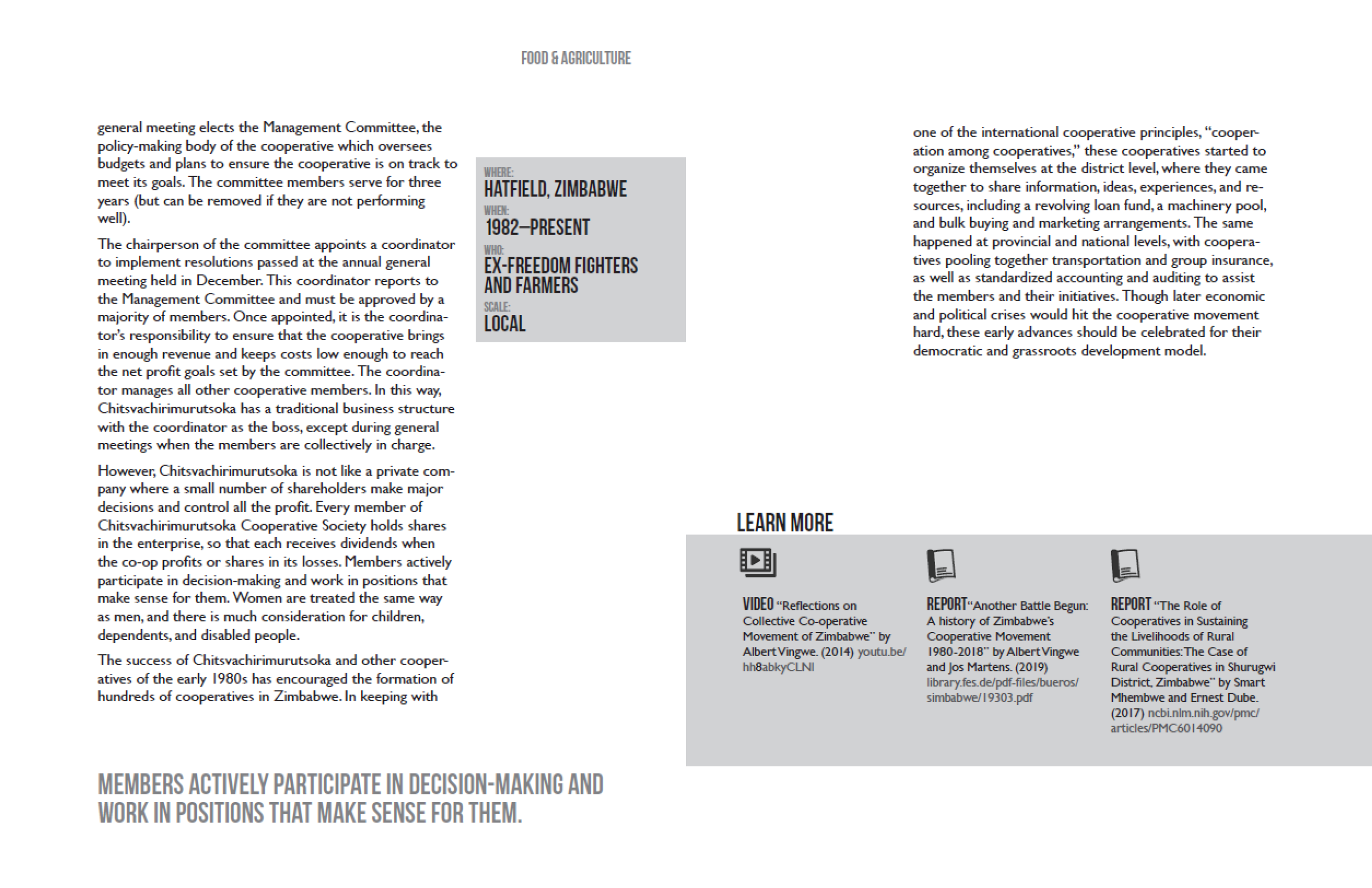
In the mid-1960S, in response to rising food prices, a group of Japanese housewives started a buying club to purchase milk directly from producers. Not only did the club secure lower prices by cutting out the middleman, its members also gained fresher products. The group grew to become a consumers’ cooperative called the Seikatsu Club Consumers’ Co-operative Union, which today has hundreds of thousands of members. In the 1960s, cultural and legal barriers prevented women in Japan from being leaders in their communities except in the family sphere, as housewives, daughters, or mothers. They were not even permitted to fill out an application with the government under their own name. Seikatsu Club challenged these traditional gender roles. It required women to apply for membership under their own names, and, more importantly, to become owners of a business. Seikatsu Club was an opportunity for many women to become active in the community. Today, 95 percent of its 420,000 members are women. Though the club’s founding members have aged, outreach to young parents has expanded the club’s demographic; it added 60,000 new members under the age of 44 in 2015 alone.
Until the early 1990s, most of the Seikatsu Club members were organized into small groups called han, which comprised up to eight people or so. In these units, members would collect money, place orders for milk and other items, and coordinate deliveries. The han was also a forum for members to express their views and wishes. By involving themselves in decisions around purchasing milk, the members grew interested in understanding the industry. They asked themselves why Seikatsu Club was able to lower prices and why mainstream milk was so expensive.
This process of inquiry and education led Seikatsu Club members to realize that they could sustain lower prices and consume higher quality milk by building their own processing facility. To raise the money necessary, the club issued bonds to borrow money from their members and established the first milk factory in 1979. Some wealthier members agreed to lend the cooperative even larger sums. After 10 years, Seikatsu Club was able to repay all the money it had borrowed.
Since then, Seikatsu Club has been solvent. Today it is able to finance new projects on the contributions of its members alone. Every month, each of the club’s members pays 1,000 yen (about $10). As of 2021, over the course of a year, this added up to about 48 billion yen (about $365 million).
As with other cooperatives, the Seikatsu Club is governed according to the principle of “one member, one vote.” However, the club has taken the ideal of participatory democracy to another level, seeking to make governance as community centered as possible. The largest body for decision-making is the general assembly, which meets annually and as needed. Beneath that are regional units called “primaries.” In big regions like Tokyo, the club has divided the structure into “sub-primaries” that have their own legal statuses and identities. This decision-making structure ensures that every member has an opportunity to be heard. When the club is deciding whether to supply a new product, each primary or sub-primary has its own discussions. Eventually there is a convergence of opinion at the general assembly. Major decisions like the club’s five-year plan entail months (or even years) of deliberations before a decision is reached.
Today, Seikatsu Club is engaged in two primary activities in addition to the collective purchasing of products: mutual aid and renewable energy. As of 2021, Seikatsu Club had about 140,000 members enrolled in its co-op insurance plans, and an additional 50,000 in its new mutual-aid so- ciety, Hagukumi. In each of its regions, Seikatsu Club also operates long-term nursing care and childcare programs rooted in the cultures and needs of local communities. Following the Fukushima disaster of 2011, Seikatsu Club invested substantial resources to build wind and solar farms. In 2021, it generated 27,632 megawatt hours of clean energy, which it offered to its members for a price on par with fossil fuels.
Seikatsu Club also serves as an incubator for hundreds of small workers’ collectives—from bakeries to design studios—providing technical assistance and patrons for new businesses. Today, around 12,000 people are engaged or employed in these collectives.
The founding members of Seikatsu Club had a saying: “If you are cooking and you open the pan, you will find politics.” In order to sustain the beautiful and innovative alternatives it created, Seikatsu Club also had to work to change laws and policies. This was realized early on; since 1979 the club has run candidates for local assemblies through the Seikatsusha Network. Today, about 80 club members are elected at different levels of local governments.
Seikatsu Club is a model for consumers in Japan and throughout the world; for its members, it is a tool that allows them to do what they want to do—as long as they are willing to come together, listen, discuss, and decide on a common cause.
in the media
Beautiful Solutions - Paperback (beautifultrouble.org)
“Capitalism can’t get us out of this crisis. If you’re wondering what can, take a look at Beautiful Solutions.”
—Naomi Klein“Shows us that we are not starting from scratch and we are not alone in imagining an economy that allows us to love each other!”
—Adrienne Maree Brown, author of Emergent Strategy: Shaping Change, Changing Worlds“A loving and thoughtful gathering of our stories…a celebration of our collective genius…takes on the revolutionary question of how we create worlds where we all thrive.”
—Makani Themba, author and Movement Strategistabout the bookabout
Our problems are global and interconnected, and our solutions must be too. With over seventy contributors, this toolbox spotlights the collective wisdom that reminds us that another world is not only possible, it’s already under construction. Everything we need to transform our communities already exists. From food sovereignty to debt abolition, from folk schools to energy democracy — and from Argentina to Zimbabwe. If you long for a more beautiful, more just, and more livable world — and want to know how to get there — this book is for you.
Created in partnership with:
Beautiful Trouble, New Economy Coalition, People’s Hub, Highlander Center
About The Author / Editor
Eli Feghali is director of Communications and Online Organizing for the New Economy Coalition. He has spent the majority of his professional life working as a communications specialist and community organizer. Eli is also Co-Chair of the Board of YES! Magazine. He lives in Cambridge, MA.
Rachel Plattus was director of programs at the New Economy Coalition from 2012-2015. She coordinated NEC's Youth and Student organizing and community reinvestment efforts, and worked to build community, organizational and funder engagement in the New Economy. Rachel lives in Cambridge, MA.
Nathan Schneider is a professor of media studies at the University of Colorado, Boulder. He has written for Harper’s, The Nation, The New York Times, The Catholic Worker, Vice, YES! and other publications. His most recent book is Everything for Everyone: The Radical Tradition that Is Shaping the Next Economy.
Elandria Williams was the Executive Director at PeoplesHub and a staff member of the Highlander Research and Education Center, where she was also on the Organizational Leadership Team. Elandria coordinated the Southern Grassroots Economies Project and supported community leaders and organizers in the South and Appalachia.
Preview


In the mid-1960S, in response to rising food prices, a group of Japanese housewives started a buying club to purchase milk directly from producers. Not only did the club secure lower prices by cutting out the middleman, its members also gained fresher products. The group grew to become a consumers’ cooperative called the Seikatsu Club Consumers’ Co-operative Union, which today has hundreds of thousands of members. In the 1960s, cultural and legal barriers prevented women in Japan from being leaders in their communities except in the family sphere, as housewives, daughters, or mothers. They were not even permitted to fill out an application with the government under their own name. Seikatsu Club challenged these traditional gender roles. It required women to apply for membership under their own names, and, more importantly, to become owners of a business. Seikatsu Club was an opportunity for many women to become active in the community. Today, 95 percent of its 420,000 members are women. Though the club’s founding members have aged, outreach to young parents has expanded the club’s demographic; it added 60,000 new members under the age of 44 in 2015 alone.
Until the early 1990s, most of the Seikatsu Club members were organized into small groups called han, which comprised up to eight people or so. In these units, members would collect money, place orders for milk and other items, and coordinate deliveries. The han was also a forum for members to express their views and wishes. By involving themselves in decisions around purchasing milk, the members grew interested in understanding the industry. They asked themselves why Seikatsu Club was able to lower prices and why mainstream milk was so expensive.
This process of inquiry and education led Seikatsu Club members to realize that they could sustain lower prices and consume higher quality milk by building their own processing facility. To raise the money necessary, the club issued bonds to borrow money from their members and established the first milk factory in 1979. Some wealthier members agreed to lend the cooperative even larger sums. After 10 years, Seikatsu Club was able to repay all the money it had borrowed.
Since then, Seikatsu Club has been solvent. Today it is able to finance new projects on the contributions of its members alone. Every month, each of the club’s members pays 1,000 yen (about $10). As of 2021, over the course of a year, this added up to about 48 billion yen (about $365 million).
As with other cooperatives, the Seikatsu Club is governed according to the principle of “one member, one vote.” However, the club has taken the ideal of participatory democracy to another level, seeking to make governance as community centered as possible. The largest body for decision-making is the general assembly, which meets annually and as needed. Beneath that are regional units called “primaries.” In big regions like Tokyo, the club has divided the structure into “sub-primaries” that have their own legal statuses and identities. This decision-making structure ensures that every member has an opportunity to be heard. When the club is deciding whether to supply a new product, each primary or sub-primary has its own discussions. Eventually there is a convergence of opinion at the general assembly. Major decisions like the club’s five-year plan entail months (or even years) of deliberations before a decision is reached.
Today, Seikatsu Club is engaged in two primary activities in addition to the collective purchasing of products: mutual aid and renewable energy. As of 2021, Seikatsu Club had about 140,000 members enrolled in its co-op insurance plans, and an additional 50,000 in its new mutual-aid so- ciety, Hagukumi. In each of its regions, Seikatsu Club also operates long-term nursing care and childcare programs rooted in the cultures and needs of local communities. Following the Fukushima disaster of 2011, Seikatsu Club invested substantial resources to build wind and solar farms. In 2021, it generated 27,632 megawatt hours of clean energy, which it offered to its members for a price on par with fossil fuels.
Seikatsu Club also serves as an incubator for hundreds of small workers’ collectives—from bakeries to design studios—providing technical assistance and patrons for new businesses. Today, around 12,000 people are engaged or employed in these collectives.
The founding members of Seikatsu Club had a saying: “If you are cooking and you open the pan, you will find politics.” In order to sustain the beautiful and innovative alternatives it created, Seikatsu Club also had to work to change laws and policies. This was realized early on; since 1979 the club has run candidates for local assemblies through the Seikatsusha Network. Today, about 80 club members are elected at different levels of local governments.
Seikatsu Club is a model for consumers in Japan and throughout the world; for its members, it is a tool that allows them to do what they want to do—as long as they are willing to come together, listen, discuss, and decide on a common cause.




